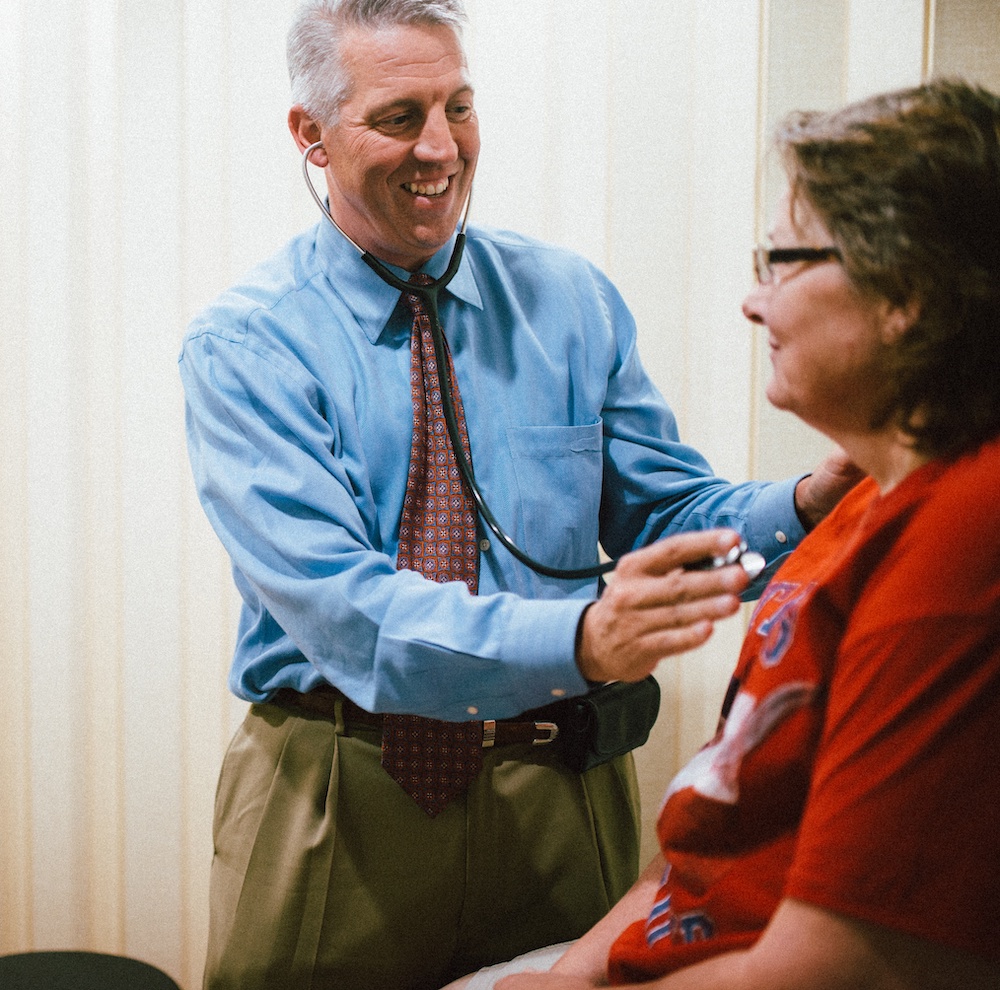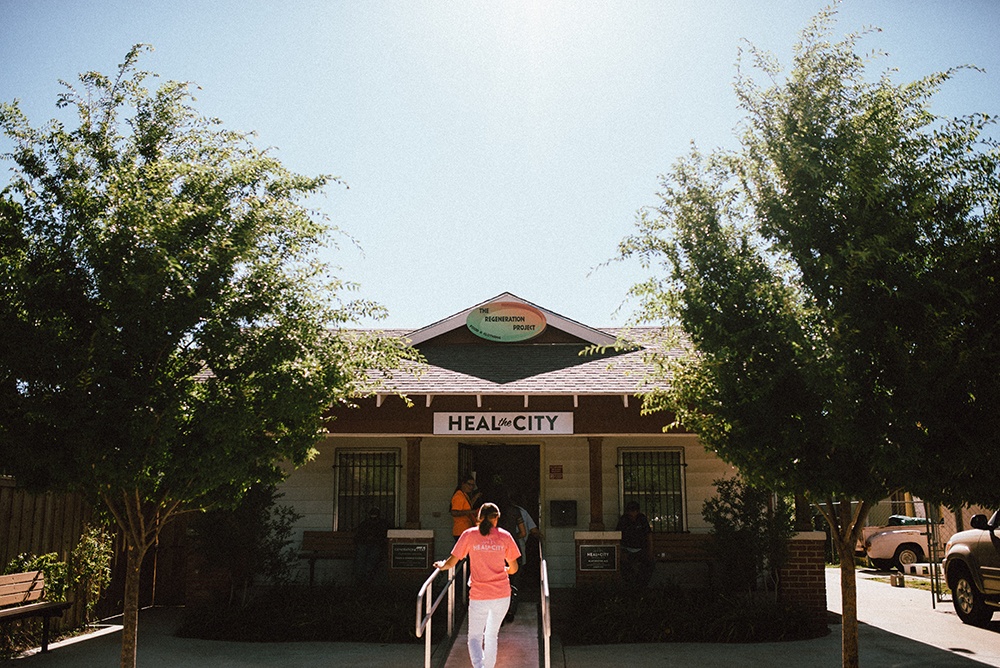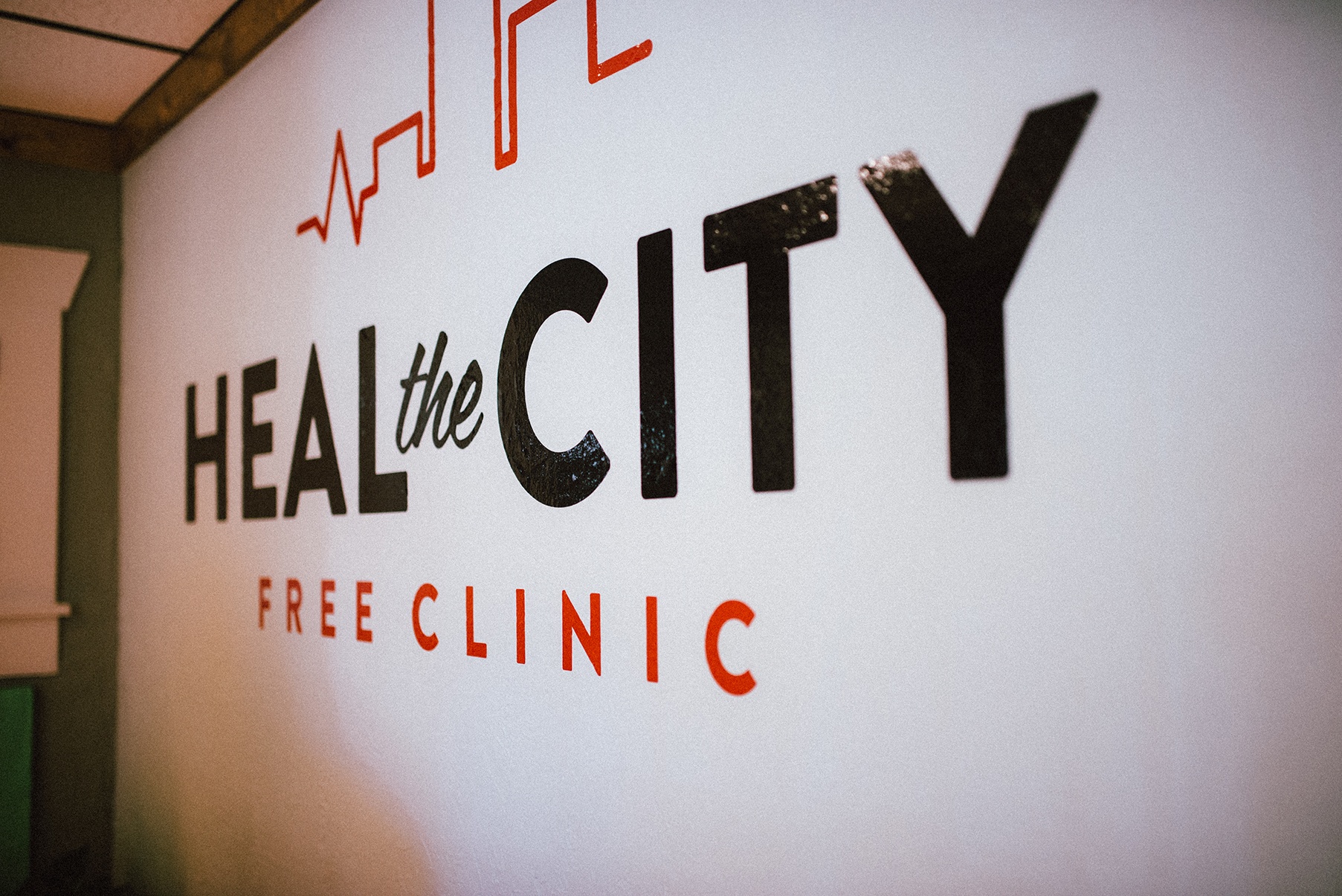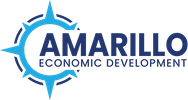“…Wellness involves a lot more than getting your medications and immunizations. Wellness is rooted in the idea of community involvement. Wellness is being healthy enough to go to school; wellness is not being hungry at school; wellness is having a safe shelter. Wellness is bigger picture.” Alan Keister, MD, Heal the City
Heal the City provides free urgent medical care and referral services for those in need. The Amarillo medical mission opened its doors in September 2014.
 Where did the idea for Heal the City originate?
Where did the idea for Heal the City originate?
Dr. Keister: Ten years ago, I started going on medical mission trips to Central America. I started in Nicaragua and then Honduras. At first, it was just me on the trip with a group; the next thing I know there are three of us, then 10, then it is 15, then 30 of us and I am leading the trips. The trips were always transformative for me, for that one week; but I always came back questioning why we were not doing something more. At one point, I even considered moving down there.
Big picture: We were looking around and doing some screening clinics in Amarillo when we realized there was a huge need for access to care, especially in the uninsured populations around Amarillo. We took this idea of how we do a clinic in a third world country and brought it here. Heal the City is a fancier version of those clinics; but really the idea started with these mission trips in Central America.
How has Heal the City evolved?
Dr. Keister: Heal the City has evolved in many different ways… My big plan was to have a kick-off event; the event was going to be a back-to-school immunization clinic. I called the Health Department and told them the date we wanted to do the immunizations, but they said the could not help me. I asked, “What do you mean you can’t help me?” They responded, “You want to do this the Saturday before school starts — a great idea — but all of our employees are already doing immunizations the entire month of August. We cannot ask them to volunteer.”
I was deflated trying to think through how we could still do the immunizations. I called the Health Department back and asked, “Could you teach us how to do the immunizations?” They said, “No, but we can help you become a Texas Center for Vaccines through the state.” Little did I know what that meant.
Chelsea Stevens: …Every year, at the beginning of school, about 100-120 kids that could not start class because they were not current on their immunizations. It is a huge problem. They start off the school year sometimes one, sometimes three weeks behind.
So I was thrilled for the opportunity; we just did not have any idea how challenging the paperwork would be. The program made perfect sense for us — we get a lot of vaccines for free and kids are getting to school on time, but it takes a lot of documentation. The paperwork is demanding and the process is hard.
Our first shot clinic, we saw 200 children. They were just lined up, and we did not have a clue what we were doing. It was scary, but we learned from that first clinic. We have come a long way. Our standards are excellent and I think we have nailed down our process. Last year, I only had two kids unable to start school on the first day. That says a lot about what Heal the City has done for just our school.
Dr. Keister: …Along the lines of what the AEDC does, economics. The economics behind Heal the City — the way the school district is paid by the state is according to the number of days children are in the schools. If we can get kids in school, the school district gets payed better. If you were to look at the thing we do that has the most lasting effect, it is getting our kids in school. Especially in this neighborhood and in this school, because education is their ticket out of poverty. The quicker we get them in school, the less stressed are our teachers and administrators. It is a win, it is a huge win for the community when kids are immunized.
Chelsea: There is a program called ACE at San Jacinto. If a student is enrolled and they miss less than so many days of school, then they have the ability to have their college paid for in full. So even in kindergarten, if they miss X amount of days of school, they are not eligible for the program. So the immunization clinic is solving lots of problems.
Dr. Keister: If you were to ask me if I planned on running an immunization clinic, I was not. However, that evolution, from day one, has made Heal the City better. Actually, because of the immunization clinic we are better partner of AISD and of the City.
What is the large-scale impact of programs like Heal the City, or Snack Pak 4 Kids, and other nonprofit organizations, in our community?
Dr. Keister: One item that we [Dyron Howell, CEO of Snack Pak for Kids) discuss is impact — we are not just providing food or health care, we are changing the next generation. The truth is there is a good chance that most of these children will never move away from Amarillo so we are really investing in the future of Amarillo, if you will.
The other piece of that I have come to appreciate is that wellness involves a lot more than getting your medications and immunizations. Wellness is rooted in the idea of community involvement. Wellness is being healthy enough to go to school; wellness is not being hungry at school; wellness is having a safe shelter. Wellness is bigger picture.
Dyron and I have spent a lot of time talking about this more global impact. In a way, it is a real investment in the community. It comes down to all the advantages I have been given because our community poured into me — this is an opportunity to give back.
 Can you tell us a story highlighting the impact of Heal the City?
Can you tell us a story highlighting the impact of Heal the City?
Dr. Keister: This week, I got a call from my first administrator, Paul Bannister. Paul called me and he was giddy. He had taken something to FedEx to send to his son. He goes into FedEx. He hands the package to the lady, and the lady says, “It’s on me.” Paul asks her what she means and she responds, “‘You don’t remember me, but you helped give me my medicines at Heal the City. I just want to pay you back somehow, so this package is on me.”
It happens all around town, you walk in and somebody knows you. You do not really realize the impact you have; but I will walk into places where I think I do not know a soul and somebody will say, ‘Hi.’ I think there is a sense of the ‘community taking care of the community,’ people try to find ways to give back.
For instance, we have a unique opportunity today. We are interviewing a lady who is a patient of ours. She has been through hard times. She is trying to make better decisions, but because of her background she cannot get a job. So we asked her what she is good at. She said she is good at cooking and cleaning. It turns out we have a place that needs some cleaning. We are always looking for ways to engage people and reinvest.
What is the role of our community, through partnerships and volunteers, at the clinic? And what partnerships would people not anticipate?
Chelsea: The Amarillo Area Foundation has been extremely generous with us, as well as Baptist Community Services and the Harrington Cancer Center. The Gilliland Foundation, Amarillo National Bank, the four churches Downtown — they have all played significant roles.
Dr. Keister: … I would say another piece of it, volunteers — it is crazy… We have volunteers of all ages, from teens to eighties… Any given Monday night, there are forty to fifty volunteers and we are seeing eighty to one hundred patients. You have all these different people coming in…
We are trying to maintain a level of excellence such that everybody knows Heal the City, and knows it is a great place to be and to receive care. The clinic does not happen without all of these moving parts. I guess if you would have asked me who was going to volunteer, I would have had no idea. I am surprised every week.
Do you consider yourself an entrepreneur, or what motivated you to take this risk?
Dr. Keister: I had been thinking about the clinic for years before we ever pulled it off. There were a series of events I went through; all of the pieces started to fall into place. I knew that I was either going to succeed or fall flat on my face.
I look at how the timing happened. I had already been in practice for over 10 or 12 years; and I spent those first 10 or 12 years building relationships with people. I think that the Clinic is very relational. I do not know everybody, but I know almost everybody that has been here. I have know Chelsea since she was an ICU nurse when I moved here.There were people that I had know all of my life saying, “We’re in.” I think that relational piece is important- being able to say, “I can trust these people, and they are willing to go for it with me.”
I also think there is a step where you need somebody that challenges you, someone to tell you that you can do it. For me, it was Dyron Howell. We eat lunch once a month to challenge each other. I will give him feedback, and he will give me feedback.
The unique thing, for Dyron and I, is we have day jobs. At the end of the day, my family does not depend on this being successful, which allows my passion to fuel the clinic.The clinic does not determine my ability to feed my family. I can pour passion into the clinic, because I do not have to have it. I want this to happen. So it is a little bit different than being an entrepreneur.
The flip side of that is that what wakes me up at four in the morning — it is not my private practice, it is Heal the City. That is what is unique about the clinic, is that it is fueled by passion.
I cannot overstate how much it means to have the support of the community behind us. I mean Amarillo has jumped in wholeheartedly and has facilitated things so that we can make this happen.
How has your new space, the old Midtown YMCA, impacted the direction of the clinic?
Dr. Keister: Central Church of Christ had offered us three apartment complexes to convert. They were going to turnkey, boom, we would move into our new space. As a board, we had already voted on this a year ago to take the offer. We were decided, and it was not going to cost us a penny. The only trouble was a little tug in my gut — we would have to move out of our neighborhood.
At my private clinic, I was in the room with a patient. I asked him how we was doing. He responds, “Not good.” When I asked him why, he asked me if I had read the paper. He was on the board of YMCA and all the YMCAs were shutting down. The South Y was being bought by investors; the north Y was being bought by the City; and he says, “I have got this YMCA sitting in the middle of San Jacinto, and who in the world would want that?”
I am literally salivating, thinking, “Oh my goodness, can you imagine what could happen with this building?”
Our mission vision says our goal is to provide quality health care for the uninsured with dignity and respect. One of the ways we provide dignity and respect is attempting to give people privacy when they come in with medical issues; so the idea of having a real clinic with real walls that feels like you are being treated special when you walk in, you are getting treated the way someone with insurance does, was exciting.
 We went and looked at the building. I called the Amarillo Area Foundation, to ask them what they thought it would cost to get the building. They said, “It is funny you ask, because they have already called because they, essentially, want to gift the building to a nonprofit active in the San Jacinto neighborhood. I thought they were kidding me. Next, I am realizing I have to go back to my board. The first board member I talked to was the member who had given us the opportunity with Central originally.
We went and looked at the building. I called the Amarillo Area Foundation, to ask them what they thought it would cost to get the building. They said, “It is funny you ask, because they have already called because they, essentially, want to gift the building to a nonprofit active in the San Jacinto neighborhood. I thought they were kidding me. Next, I am realizing I have to go back to my board. The first board member I talked to was the member who had given us the opportunity with Central originally.
I asked him if we were insane for considering this and he responds, “We have to chase this until either the building is ours or it plays out.” We were able to purchase the 20,000 square foot building.
What do I see happening there? Well, I do see a clinic that is going to feel like a clinic. We will continue to meet a need and I think the clinic will continue to expand.
The reality is, I do not think we will never not exist. There are always going to be people in that gap, people that will need a place to go…
Let’s just say that you come in, you are asking for blood pressure medication, and I say “OK, but I want you to go log five miles on the indoor walking track,” or, “Hey, we have a group fitness class that meets after hours and we want you to come.” We are going to have a residential kitchen; we want to teach people to cook so they can take better care of their health. Maybe we will have a coffee bar that becomes a hub for older people who do not have a place to go.
There is no doubt in my mind that ultimately, this has to be replicated. We are sort of in the center of the city, but the place that desperately needs a clinic is the east-northeast side by Eastridge. Then, we are talking about new logistics. How could I cover 31 languages? Right here I cover many languages, but the main ones are English, Spanish, and Burmese. Up to this point, we have utilized a lot of volunteers. I think it would tricky to find the medical volunteers that have the passion and the heart to expand this. You may be looking at a bigger budget to make it happen. Still, that is the dream, because it is making an impact. The reality is, the most expensive place to take your patients is the hospital. The more we can do in their neighborhood, away from the hospitals, is a win.
The last piece is — we are not trying to be a handout organization. When our patients come back in for their refills, we actually suggest a $5 donation to keep the clinic going. It is not for the medicine; it is because they received a service here and we ask if they are willing to make a five dollar contribution to support Heal the City. Not everybody can do that; we still give them their medicine, but it gives them a chance for dignity through their care. This is not a handout, but it is, “OK, I am paying it forward. I am playing my role in this.”
We are trying to engage people. When you hear our patient’s stories — I make the joke that our patients are what you might call serial bad-decision makers — they make a lot of bad decisions. But when you hear some their stories, you know that not all of their bad decisions are what got them here.
Want To Learn More About Heal The City?
Visit healthecityamarillo.com to learn more about Heal the City’s mission, volunteer opportunities and more.
Photos courtesy of Kaili Herr Photography









